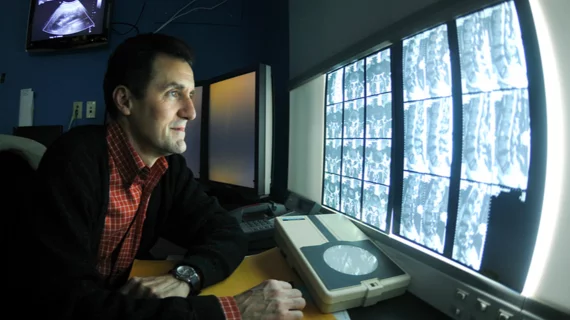Imaging reports may eat up the bulk of a radiologist’s day-to-day duties, but, according to a pair of Charlottesville, Virginia, clinicians, supplementing those reports with interactive multimedia could actually boost efficiency while adding value to conventional reporting.
“Written imaging reports are the primary work product of diagnostic radiologists, reflecting our expertise and serving as the principal means by which we provide patient care,” Steven D. Beesley, MD, and Cree M. Gaskin, MD, wrote in the Journal of the American College of Radiology. “Despite dramatic innovations in imaging technology over the past 100 years, the report itself is traditionally communicated archaically, in the format of plain text prose.”
Though it’s not the standard in the U.S., the idea of integrating multimedia into radiology reports has been around for at least two decades, Beesley and Gaskin said. Content like images, graphs, tables and hyperlinks, as well as customizations like font type and color, can add functionality to traditional reporting, but most practices opt against them in favor of something quicker and simpler.
The biggest gap in applying more interactive content, though, is probably the electronic health record, the authors said, since those downstream information systems are usually designed around plain-text reports.
“To create interactive multimedia reports in an efficient manner, there needs to be seamless integration between the image data and the reporting application,” Beesley and Gaskin wrote. “A natural way to accomplish this is for reporting functionality to be embedded into the PACS.”
At their University of Virginia practice, the authors said they have been part of a push toward multimedia reporting that has circumvented the EHR issue by embedding PDFs of media content the EHR database. Hyperlinks were added to easily launch the PDF files and allow reviewers to view the interactive report alongside the full imaging study.
Beesley and Gaskin said that after a short trial period, clinicians at their hospital are utilizing multimedia reporting regularly. Flexible text formatting can allow radiologists to alter font style, color and size, as well as highlight any key parts of the text—a feature that makes reports not only more visually appealing to interpreters themselves, but to patients who might see them, too.
Images have the same effect, the authors said. Radiologists can embed important images into the report, allowing more concise written descriptions of photos and preventing the reader, in some cases, from needing to look up the full imaging study. Beesley and Gaskin said their practice also played with embedding a photo of the interpreting radiologist within the report to personalize interpretation and increase radiologist visibility.
At UVA, the authors said embedding an image is as simple as dictating a voice command—"copy key images”—to a computer. Hyperlinks can be embedded with similar ease and used to send readers directly to certain sections of the report, which is especially functional in the case that a student or resident preliminarily interpreted the images and the faculty reviewing those reports have questions about a certain image or piece of data.
“This improves communication and saves time for the faculty radiologist,” the authors wrote.
So, despite the fact that it can look daunting to radiologists unfamiliar with a more interactive platform, the addition of multimedia to radiology reporting could increase quality of care and, if done right, cut time, Beesley and Gaskin said.
“Interactive multimedia reporting offers potential to improve the quality and value of our primary work product,” they wrote. “In our experience, it can be done efficiently and effectively. There are technical hurdles to jump and cultural change to foster, but our experiences prove these to be surmountable tasks.”

